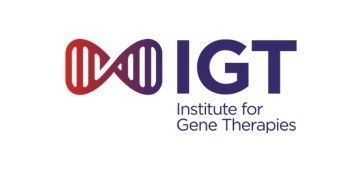Cardiac Aspects of Barth Syndrome: Part 1
Electrophysiology
June 16th, 2020
Learning objectives:
· Differentiation of the various types of arrhythmias, including symptoms and screening
· Discussion about the various arrhythmia therapeutic devices and indications for use
· Review of Barth syndrome specific electrophysiological findings from the medical literature
· Guidance for electrophysiological surveillance
Guest Speakers:
Dr. Carolyn Taylor is an Associate Professor, Division of Pediatric Cardiology at The Children’s Heart Program of South Carolina at the Medical University of South Carolina. Dr. Taylor is a pediatric cardiologist with additional specialty training as a pediatric echocardiographer. Her research and clinical interests are in the areas of imaging and evaluation of cardiac function. Assessment of cardiac performance using echocardiography as well as evaluation of functional capacity in various forms of cardiomyopathy and cardio-skeletal myopathy are central to her clinical practice and research effort. She has been actively involved in the Barth syndrome scientific and research community since the early 2000s and has authored and co-authored publications on cardiomyopathy, exercise capacity through collaborations with Todd Cade, and conducted research utilizing on-site studies at the BSF conference and findings from the Barth Syndrome Registry.
Dr. Lanier Jackson is board certified in pediatric cardiology as well as adult congenital heart disease. Dr. Jackson received his undergraduate degree from Wake Forest University in 2004 and completed medical school at the Medical College of Georgia in 2008. He went on to complete his pediatric residency at the University of Virginia and his pediatric cardiology fellowship training at the Medical University of South Carolina (MUSC). He obtained sub-specialty training in pediatric electrophysiology at the Medical University of South Carolina and pursued additional training at Boston Children's Hospital and joined the MUSC faculty in 2014.
Understanding the basics of heart rhythms and electrophysiology
Electricity is the mechanism that makes the heart beat. Cells inside the heart muscle send out electrical impulses that tell the heart to contract and pump blood. The pacemaker of the heart is the “sinus node” which sends out an impulse for every heartbeat and can respond to chemicals such as adrenalin. This allows for normal variability of your heart rate during activity or at rest. You can think of the heart like a house; electricity and plumbing both need to work. An electrophysiologist is a heart rhythm doctor who helps ensure that the electricity of the heart is working as well as possible.
An arrhythmia refers to abnormal beating of the heart. When the electricity in the heart and the subsequent heart rhythm and contractions are not working properly, the heart may be beating too fast (tachycardia), too slow (bradycardia) or irregularly. These arrhythmias may originate from the top chamber of the heart (the atrium), the bottom chamber of the heart (the ventricle), or occur when the electrical current goes around and around in a circular pattern known as SVT (subventricular tachycardia).
There are three primary types of arrhythmias:
1. Atrial tachycardia: A heartbeat that is too fast that originates from the top chambers of the heart (the atrium).
2. Ventricular tachycardia: A heartbeat that is too fast that originates from the bottom chambers of the heart (the ventricles) and is usually associated with abnormal heart muscle as found after a heart attack or from cardiomyopathy.
3. Ventricular fibrillation: A heartbeat that is so inefficient that the heart stops beating. In this type of arrhythmia, disorganized electrical impulses result in poor or no contraction of the heart and therefore no blood can be circulated to the brain and body. In this case, the ventricles quiver fast and erratically. Ventricular tachycardia can lead to ventricular fibrillation, which is associated with sudden cardiac death.
Another type of arrhythmia is Long QT syndrome. This is identified by a long QT interval on an electrocardiogram (ECG) and represents delayed relaxation of the heart. When the heart takes longer to relax, there is a greater risk for other arrhythmias, especially ventricular tachycardia or in some cases ventricular fibrillation. Long QT syndrome can be exacerbated by some medications which prolong the QT interval; therefore, it is advised that patients with a risk of arrhythmia check www.crediblemeds.org in order to search for drugs that prolong QT or can cause other arrhythmia complications.
Arrhythmias and Barth syndrome
Patients with Barth syndrome have an increased risk of ventricular arrhythmias and sudden cardiac death as compared to the general population. In addition, people with Barth syndrome are more likely to have abnormal heart muscle and cardiomyopathy. However, it is unclear at this time how best to identify which Barth patients, even amongst those with arrhythmias and cardiomyopathies, are at the greatest risk for sudden cardiac events.
Three types of cardiomyopathies are associated with Barth syndrome:
1. Left ventricular non-compaction
2. Dilated cardiomyopathy
3. Hypertrophic cardiomyopathy
(For more information on cardiomyopathy and Barth syndrome, please reference Dr. John Jefferies presentation from January 2020 or the upcoming August presentation with Dr. Carolyn Taylor).
All people with cardiomyopathy have an increased risk of ventricular arrhythmias, but in Barth syndrome patients there may be two specific mechanisms associated with malignant arrhythmia. First, the abnormal heart rhythm may be related to mitochondrial dysfunction as we know that mitochondrial activities are important for cardioprotection. Secondly, the arrhythmia may be related to the type of cardiomyopathy experienced by the patient. Nonetheless, it has been demonstrated that there is in fact a higher than normal incidence of arrhythmias in Barth syndrome. A study using data from the Barth syndrome registry found that approximately one in seven patients have ventricular arrhythmia. Although the majority of patients in the registry were also older than 11 years of age, even infants with Barth syndrome have a risk for ventricular arrhythmia. Finally, as many Barth syndrome patients also have a prolonged QT interval, there is a potential but unconfirmed relationship between QT interval and increased risk of death.
Screening, Surveillance, and Management for People with Barth syndrome
Given the increased risk of arrhythmias and sudden cardiac death, regular screening is very important for individuals of all ages who have Barth syndrome. Routine screening includes ECG, including advanced ECG methods, ambulatory monitoring to collect heart rhythm data over time, and symptom review. For people who are considered higher risk, particularly those with left ventricular non-compaction, poor ventricular function, and syncope, screening should be completed more frequently.
Symptoms of arrhythmia are important to assess; however, it is worth noting that some people with Barth syndrome may be completely asymptomatic yet still have an arrhythmia. Symptoms experienced by people with an arrhythmia may include:
· Palpitations (fluttering or pounding sensation with irregular heartbeat)
· Fainting (syncope)
· Lightheadedness
· Shortness of breath
· Anxious feeling
· Chest pain
Ambulatory Monitoring, Wearables, Implantable Loop Recorders, and EP Studies
Fortunately, there exists a range of 24/7 monitoring options today in order to help capture information about abnormal heartbeats over time. Several types of ambulatory monitors exist, including traditional monitors that are portable but larger, as well as newer devices that are much smaller in addition to emerging “wearable” technology. All of these are worn by the patient (or in some cases implanted in the patient) in order to allow the device to capture a large volume of data, including normal and abnormal heart rhythms as well as the rhythm during symptoms, without the patient needing to be in the hospital or tethered to a large machine.
Traditional ambulatory monitors, such as the Holter, looping monitor, and mobile cardiac telemetry units are sometimes still used but are more frequently now replaced by smaller, less-intrusive models that are still very effective at capturing heart rhythm data over time. For example, the Zio patch is worn like a sticker placed on the chest and can be worn for hours (or up to 14 days) in order to collect information about every beat of a person’s heart while they are awake, sleeping, exercising, showering, etc. The sticker style of this monitor is comfortable for most people is especially useful for children. Even less intrusive and stylish “wearables” are also becoming popular and are multi-functional in some cases (Apple Watch or Fitbit).
In some situations, an implantable loop recorder may be helpful. This device is relatively small, about the size of a USB thumb drive or smaller and is inserted via a tiny incision right underneath the skin. The device sits right on top of the heart and looks at every beat a patient has for three years, regardless of activity, situation, etc.). A home monitoring system allows the patient to share the loop recorder data with his or her physician regularly which is helpful in order to identify trends over time. In addition, a patient can mark the moment he or she is experiencing symptoms so that information can be analyzed by the EP physician in order to review the heart rhythm data from that specific time.
Finally, another surveillance tool is the electrophysiology (EP) study which allows the physician to look at how electricity moves through the heart. In an EP study, catheters are first placed in the heart and then the heart is purposely irritated in order to (safely) evaluate how easily an arrhythmia can be induced. An EP study is helpful in order to evaluate for arrhythmias and provides one way to identify patients who are more at risk.
Treatment and Management Strategies: AICDs and EP screening
Automatic implantable cardioverter defibrillators (AICDs) are used to provide ongoing monitoring but also, more importantly, reset a life-threatening arrhythmia by sending an electrical impulse (shock) to the heart. AICDs are implanted in the body; the generator is placed in the left upper chest and an electrical lead is placed directly into the heart.
Families often ask, “when is the best time to place an AICD?” Although many patients with Barth syndrome do have arrhythmias, there is still considerable evaluation necessary before an AICD may be indicated. Timing is important; ideally, the AICD is placed BEFORE a sudden cardiac event occurs. However, a thoughtful approach is necessary as there are some potential complications. For example, the AICD could provide inappropriate shocks, or require additional strategy and monitoring when placed in a child or teen that is still physically growing. On the other hand, there are a few clear indicators for use of an AICD, especially in a person with Barth syndrome who carries additional risks of arrhythmias and sudden cardiac death. These include significant cardiac dysfunction (ejection fraction less than 35%), history of passing out due to arrhythmias, or a prior sudden cardiac event. When the decision to use an AICD is not clearly indicated, a multi-disciplinary approach is warranted wherein the family, cardiologist, and electrophysiologist can help evaluate risks and benefits.
For people with Barth syndrome, even if there aren’t any current symptoms associated with arrhythmia, consider including an electrophysiologist as part of the healthcare team. In circumstances when the patient is experiencing episodes of passing out, has an abnormal heart monitor study, or has significant ventricular dysfunction, then involvement and additional screening by an EP doctor is clearly indicated. The EP physician can help to establish symptom history, manage non-emergent care and heart rhythm monitoring, and can help navigate the decision about an AICD if necessary.
Participating in research is also a critically important way that patients can help to better inform clinicians about cardiomyopathies and arrhythmias in Barth syndrome.
Community Questions:
How difficult is it to switch from an AICD to a subcutaneous AICD? Subcutaneous AICDs are AICDs that are useful in patients who have a larger chest circumference as the generator is placed in the axillary area under the skin (near the armpit). Changing from an AICD to another type of ICD device is not common. Once placed, the intention is that the AICD can be used for a long period of time. The most common issue over time with an AICD is the failure of the electrical lead or a shift in placement due to growth in a child or teen. The generator battery can be changed out every 8-10 years (or more often if needed) but the AICD is intended to stay in place until it is no longer working.
Is a loop recorder the precursor for an AICD? What about monitoring heart rhythm using an apple watch or Fitbit? First, yes, an implantable loop recorder can help to identify people who are at risk who could then be evaluated for an AICD or medical therapy. Wearables, such as Fitbit and Apple watch, can be useful supplements to medical heart monitoring devices. When patients have concerns, the data from commercially available wearables can offer a good starting point for the EP doctor to evaluate the need for a loop recorder or medical monitor. In general, wearables are helpful in populations who do not have significant underlying risk but do NOT replace medical screening for arrhythmias in people with known genetic cardiomyopathy. In addition, specifically for those individuals with Barth syndrome who may have non-sustained ventricular tachycardia or asymptomatic ventricular arrhythmias, these potentially life-threatening arrhythmias can be very difficult to identify using wearable devices like the Fitbit or Apple watch; in these circumstances, a medical-grade heart rhythm monitor is warranted.
Are people with Barth syndrome at a higher risk for arrhythmias than the general dilated cardiomyopathy population? There probably is, based on the data, an increased risk of serious arrhythmia in those with Barth syndrome as compared to people with general cardiomyopathy, but this is difficult to prove since Barth syndrome is a very rare disease. Are PVCs benign in people with Barth syndrome? PVCs (premature ventricular contractions) are extra heartbeats that occur between contractions and cause the feeling some patients describe as “fluttering.” Patients with structurally normal hearts who have PVCs are frequently benign. Patients with Barth syndrome however almost always have structurally abnormal hearts, and in this case, PVCs may not be benign. PVCs could be early indicators of abnormalities in the heart; PVCs alone do not indicate ventricular tachycardia and are definitely not a singular reason for an AICD. Loop recorders and external heart monitors can help capture PVCs as well as other heart rhythms. The recorder data allows the cardiologist and electrophysiologist to evaluate the frequency and style of the PVCs in order to consider appropriate screening or intervention. It is not clear at this time if a number of PVCs (say greater than 20% of total heartbeats) are correlated to poor outcomes in people with Barth syndrome.
Can a change in posture and subsequent dizziness be an indicator of an arrhythmia? Patients who feel lightheaded when changing from sitting to standing can be evaluated further using a heart rhythm monitor as described. The most likely scenario in the case of postural dizziness is that the heart rhythm is normal; however, as mentioned, since people with Barth syndrome carry a higher overall risk of life-threatening arrhythmias these episodes are worth further evaluation.
Is there any evidence of arrhythmias in female carriers of Barth syndrome? In the experience of today’s speakers, there is no documentation of arrhythmias in the women who are Barth syndrome carriers. There are a couple of case reports of Barth in girls, but this is different than carrier mothers. If women want to get screened (at any age), assuming results are normal, then repeat screening every 5 years in the absence of symptoms makes clinical sense.
How often should an ECG and ambulatory monitoring be completed for people with Barth syndrome? While there isn’t an established standard, screening, even for patients with normal ejection fraction, should be screened two times a year with symptom assessment, echocardiogram, and ECG. Consider other risk factors – how much do the valves leak, are there other concerns about the health of the heart muscle or other symptoms, are there other indicators of risk and underlying arrhythmias that warrant more frequent assessment? As children age, more thorough and increased frequency of screening is warranted as primary prevention given the risk of life-threatening arrhythmias. In addition, the role of a home AED can be considered, especially in individuals who have an increased risk but whose clinical picture doesn’t warrant an AICD.
Some medications for arrhythmias can also cause or worsen arrhythmias, so should patients avoid those medications? Indeed, several anti-arrhythmic medications can cause prolonged QT intervals, which as we discussed can lead to ventricular arrhythmias. There is a risk-benefit analysis necessary for every patient and a case by case evaluation is critical to appreciate the potential use, benefit, and risks of any medication.
Are there any recommendations in long term EP surveillance from pediatric to adult care? While there isn’t a specific recommendation, it is generally advisable to find a cardiologist and electrophysiologist at a center where the opportunity to learn about Barth syndrome exists and collaboration with other disciplines (within and outside of cardiology) can be utilized. Seek the care of a cardiologist who has experience caring for patients with arrhythmias caused by cardiomyopathies. In some centers, pediatric EP physicians will continue to treat older patients, especially when that physician is also involved in caring for adult congenital cardiomyopathies and conditions. Advocacy on behalf of the patient is important; share information and background on Barth syndrome or ask your pediatric EP to help with the transition. addition,
Is there a need for pacemaker (pacing) with Barth syndrome? In general, it is rare that a Barth syndrome patient has bradycardia (heart rate is too slow) or heart block (beats not getting from atria to ventricles properly). However, if a person is taking beta-blockers and the medication is causing their resting heart rate to be too low, it is possible that the pacing function of an ICD may be needed.
Are patients truly asymptomatic before an arrhythmia is identified, or do they have some other suggestive non-cardiac symptoms? Good data doesn’t exist to fully address this question; however, this further justifies the use of medically supervised arrhythmia screening in people with cardiomyopathies such as Barth syndrome. Asymptomatic arrhythmias and non-sustained ventricular tachycardia are identified via medical monitoring.
What is cardiac ablation, and what is the efficacy of catheter ablation in treating arrhythmia in general? Cardiac ablation refers to the use of catheters (as in a diagnostic cardiac catheterization, through the groin) to make tiny burns in abnormal electrical fibers in the heart responsible for the arrhythmia so that it breaks the “circuit” or abnormal electrical pathway. Success rates are variable and can be dependent on factors specific to the patient’s arrhythmia. The goal is always for the elimination of all arrhythmias, but sometimes an acceptable endpoint can be a decrease in the overall frequency of rhythm abnormalities.
Would it be beneficial to get a wearable or telehealth monitor for anyone with Barth syndrome? Wearables are not intended to be medical devices to monitor high-risk arrhythmias. Wearables ARE useful as general heart rate (not necessarily rhythm) trackers. True arrhythmia screening is best completed by medically supervised monitors; the Kardia device (available from Amazon) has some merit as a single lead ECG for those having palpitations.
The second session is scheduled for August 19th at 9:00 AM EDT. It will focus on the pathophysiology of Barth syndrome (cardiomyopathy, non-compaction, etc.)












